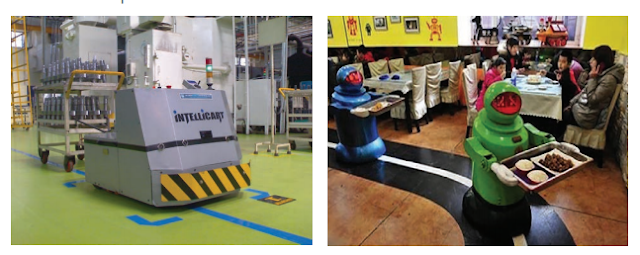Please note: This post is long overdue, our Osmos are now an integral part of our class!
As a specialist teacher focusing on a "new" type of class, I have been very fortunate to have some great opportunities to work with some new edTech tools. One of the most amazing things that I have seen trending online is an iPad accessory called Osmo.
The Osmo is a specially designed iPad stand, reflector, sets of tiles and apps. I would classify the Osmo as an AR accessory... but instead of augmenting "reality" the Osmo allows reality to augment interactive apps.
The Apps:
The best part of Osmo is that all of the apps are free and are full of content! Some apps even allow for custom content.
(this app uses tiles)
Best described as a challenging "hang-man style" activity, this app challenges learners to think critically about images to determine the correct word. There are different modes of play which allow for players of any age to engage in a challenging word/spelling activity which promotes critical thinking and creativity. An interesting twist to this activity is that multiple words can be linked to an image. A picture of a boat landing could include the words "boat", "dock", "water", "ship" etc... by indicating the number of letters in each word, this app supports learners by allowing them to grow from failure (wrong letters) and encourages learners by offering hints on certain modes.
Custom albums can be uploaded through an online "MyOsmo" account and can be easily loaded onto the app through a simple download. This feature allows for endless customization!
This app is simply amazing and engages my learners in great levels of critical thinking and collaboration!
(this app uses tiles)
For decades teachers have used tangrams to challenge learners in spatial thinking and critical thinking skills. As a student and as a teacher, I love using tangrams - I love the challenge, the fun, and the different levels of difficulty... but I hated not knowing if a puzzle was ever done correctly - Tangram by Osmo solves this problem! This app uses hand crafted wooden tiles (they are quite durable!) to allow learners to slide, flip, and rotate their pieces to create the pattern on the screen. The Osmo app then chimes a short melody if the puzzle was successfully completed.
The best part of Tangram is the different difficulty modes. The app differentiates the puzzles (over 600 are in the current version) into difficulty levels in two main way: 1) color coding the puzzles- yellow dot puzzles have colorful outlines on screen, orange and red dot puzzles use either a grayscale or black puzzle outline (perfect for challenges!); 2) Tangram breaks up the puzzles by placing them on different regions of a Tangram map. Some regions are open to explore and some need to be unlocked by completing challenges. My students love both features!
This app is so cool because it challenges all my students differently - yes, kindergarteners and fifth graders love it equally!
(this app uses tiles)
Numbers is a great activity which challenges learners of all ages to demonstrate their understanding of different math concepts. The levels of this app are set up sequentially by skill - learners first count, then add, multiply, etc... This activity is great for any age and allows students to work together, collaboratively, to complete various challenges.
(this app uses drawing/whiteboard)
Matsterpiece challenges students to engage in their creative side while also using their critical thinking skills. This app allows students to practice the artistic skill of contour drawing. By focusing their attention to the screen the students are able to see the image they are drawing overlapped with the live image the Osmo reflector is capturing.
There is a large library of images that work well with this app, but if you are looking for more or looking for something specific users can also take a picture or search for an image. The app will process the image and create an outline-based version of it for the user to draw!
This app even allows users to capture a picture or video of their project to share. The sharing feature is quite neat as it does not work through the Apple Mail app and is sent to a predetermined email from an Osmo email address specific to this app! Check out one of my
student's materpieces... too bad she scribbled at then end!
(this app uses drawing/whiteboard -
caution app may make the premise of physics fun!)
Newton is a wonderfully designed app and is one of the apps where I see the most updates from Osmo! In this activity, users are challenged to direct the dropping balls to one of the goals. Throughout different challenges, users will also need to direct the balls to different goals, fan blades, portals, and more! This activity requires creativity and critical thinking to solve each unique challenge. Students seem to love this engaging activity and I love the fact that they are bending their brains around this amazing critical thinking puzzle of an app!
The the technology behind the reflector that allows the Osmo to interact with tangible items also tends to be sensitive to glossy whiteboards. Since both Masterpiece and Newton would require a lot of paper if used with a large number of students, it makes sense to find a whiteboard solution. After testing MANY whiteboards I found a product which works wonderfully with Osmo - WriteyBoard. I resurface old, scuffed up student white boards with the
Matte WriteyBoard to make perfect sized work areas to use with Osmo Masterpiece and Osmo Newton!
I am incredibly happy to be a "Certified Osmo Advocate" - have a question? Ask me!




















